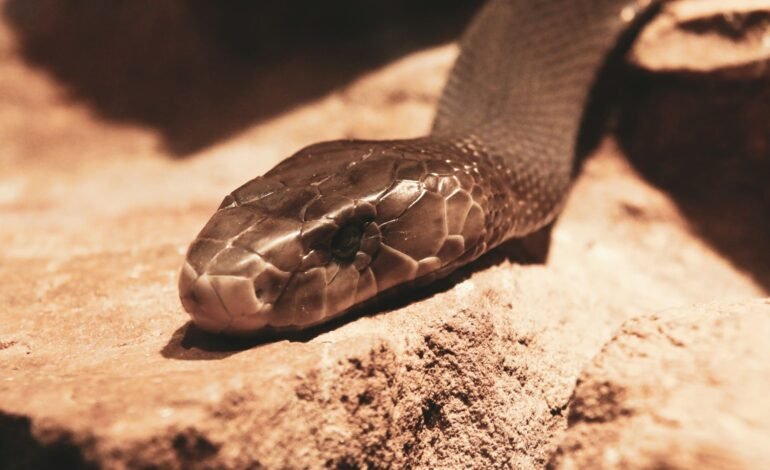Black Mamba venom more complex than previously thought

A study from the University of Queensland has uncovered a previously unknown secret about the venom of the Black Mamba, one of the planet’s most venomous snakes. Professor Bryan Fry from UQ’s School of the Environment said that the study, published in Toxins, reveals that the venoms of three species of mamba were much complicated than we realised, adding that it shows why antivenoms are often ineffective.
“The Black Mamba, Western Green Mamba and Jamesons Mamba snakes aren’t just using one form of chemical weapon, they’re launching a coordinated attack at 2 different points in the nervous system,” Professor Fry said. “If you’re bitten by 3 out of 4 mamba species, you will experience flaccid or limp paralysis caused by postsynaptic neurotoxicity.”
Current antivenoms, he said, can treat the flaccid paralysis. But the study found that the three species are able to attack another part of the nervous system, causing spastic paralysis bypresynaptic toxicity,
“We previously thought the fourth species of mamba, the Eastern Green Mamba, was the only one capable of causing spastic paralysis,” Professor Fry added. “This finding resolves a long-standing clinical mystery of why some patients bitten by mambas seem to initially improve with antivenom and regain muscle tone and movement only to start having painful, uncontrolled spasms.”
The venom begins by blocking nerve signals from reaching the muscles. When antivenom is administered however, it overstimulates the muscles. “It’s like treating one disease and suddenly revealing another.”
Bites from Mamba, including the Black Mamba, pose a serious threat in sub-Saharan Africa. They are responsible for around 30,000 deaths annually.
Stay tuned to EyeOnLondon for the latest news and expert opinions.
Follow us on:
Subscribe to our YouTube channel for the latest videos and updates!
We value your thoughts! Share your feedback and help us make EyeOnLondon even better!









